How to root a ficus cutting?
Years back (i haven't tried doing this in a while) i could readily root ficus cuttings in just water. However as of recently... that hasn't worked for me. I have a tree that i have to take some sizable pieces off of (not to thick) that i'd like to try and root.
I have sanitary clippers, and rooting hormone, which would be the best way to go about doing this? What have you done to get a better percentage of ficus cuttings to root?
Just looking for some better ideas then the water since that hasn't been working for me
Im hoping Al see's this one! Thanks for your help!
Comments (41)
tapla (mid-Michigan, USDA z5b-6a)
11 years agolast modified: 9 years agoSpecies?
How large (thick) are the cuttings?
Is the parent material healthy and growing well?
Al
grrr4200
Original Author11 years agolast modified: 9 years agoSpecies is Benjamina green.
Cuttings will range from 12-16 inches, pencil thickness to smaller. Stems are woody but not too woody- very healthy.
Parent plant is also very healthy, lots of new growth.Thank you for your help!
Related Professionals
Grand Haven Landscape Architects & Landscape Designers · Middle Island Landscape Architects & Landscape Designers · Norwood Landscape Contractors · Arlington Landscape Contractors · Costa Mesa Landscape Contractors · Goodlettsville Landscape Contractors · Gresham Landscape Contractors · Kailua Landscape Contractors · Metairie Landscape Contractors · Mount Sinai Landscape Contractors · Oviedo Landscape Contractors · South Farmingdale Landscape Contractors · South Lyon Landscape Contractors · New Carrollton Landscape Contractors · Selma Landscape Contractorsgrrr4200
Original Author11 years agolast modified: 9 years agoThank you so much for your input! your opinion is greatly appreciated.
question, is there anyway to use this rooting technique with a larger cutting? I'd like these pieces im going to trim off to stay as big as possible (or from reading your message does that mean i have a lesser chance of them surviving?)
I guess a picture of the tree im going to prune and the branches in question would be easier for you to give an anwser and i can try my hardest to get you pictures.
But they would look like a standard tree only smaller, i believe my measurements were incorrect in regards to length. At least one of the cuttings i know will be about 2 feet long in total. I can trim back the branches on the plant as you suggested no problem but id like it to keep its straight trunk apeal and not cut that portion down.(i'd like to grow these cuttings as standards) trimming up as they grow or maybe even letting them grow wild.
I also have a rocky mixture as you pictured with perlite and vermiculite.
The specimen i purchased has a 'natural' growth pattern and not one of those over pruned nursery trees with the lolly pop top. It's more 'free spirited' and 'untamed' There are a total of 4 branches i'll be pruning just because they make the tree look awkward lol. I shall try to take pictures! Again Al, thank you so much for your help! I really value your opinion
tapla (mid-Michigan, USDA z5b-6a)
11 years agolast modified: 9 years agoThank you for the kind words. You must live in da UP, eh? In more southerly locales, you can start some pretty big cuttings - like up to an inch in diameter, but in MI, if you want to propagate something that large, it'd be better by air-layer.
With nature in charge, a free-spirited and untamed tree always looks good .... or at least interesting. Growing indoors alters a tree's natural growth habit, so indoors, 'free-spirited and untamed' usually means a shambles, unless you get a hand in the process and help things along. A straight trunk shouts 'formal', so a straight trunk with branches left to their own devices (free-spirited and wild) will end up being something of a paradox. The trained eye will pick it up right away. The untrained eye might not be able to identify what looks unnatural about the tree, but will nevertheless pick up on the incongruity. Still though, it's your call & you should grow your tree however you like, and not how I like.
You can probably do w/o the vermiculite. It holds a lot of water and breaks down into smaller particles quickly. Screened/rinsed perlite is great for starting cuttings. For most things, I just use the gritty mix - it's great. If I have an especially valued cutting, I'll mix up some screened Turface & crushed granite @ 50/50, which is just the gritty mix with the bark left out.
Al
grrr4200
Original Author11 years agolast modified: 9 years agolol yeah der eh? you betcha! I do live in the UP:) you caught me! although it seems that spring has finally sprung and hopefully June will turn out to be less of a rainy mess then it started! Im gonna give this a go! I also have grow lights that i can put these babies under just in case they need more light (i dont know which direction my windows face but my ficus trees LOVE it!)
Should i allow these cuttings an hour or two to stop milking before planting? should i add root hormone? Im gonna try this gritty mix you speak of. I've been referring to you as the 'Ficus God' while bringing up this tree in my conversations lol. I believe with your advice they shall survive!
tapla (mid-Michigan, USDA z5b-6a)
11 years agolast modified: 9 years agoI wouldn't be worried about the oozing. If you swish the cuttings in water after you prepare them, you're good to go. I've never found rooting aid necessary because Ficus comes so easy from cuttings, but it may be helpful in that it could hasten root formation. We're at a distinct disadvantage here in MI because of our short growing season, but good lighting offers hope. To give credit where it is due, the real Ficus God, at least in the US, is probably Jerry Meislik, a fellow bonsai practitioner. He has written a book called "Ficus - The Exotic Bonsai" that is packed full of good information, if you're interested. ISBN #0-9749524-0-0
Best luck - have fun.
Al
grrr4200
Original Author11 years agolast modified: 9 years agoThank you again Al! let the cutting commence! I wish (like facebook) garden web had a like button for comments:) You are truely most helpful. Thank you!
henrikn
11 years agolast modified: 9 years agoHello,
I have a related question regarding rooting ficus cuttings, and I hope you don't mind a slight hijack of the thread. I have two thin cuttings (perhaps 4mm in diameter), from a strongly growing parent plant. Unfortunately I started rooting them before I found proper instructions, so they are currently each situated in a glass of water. Roots are sprouting and are about as long as the stem is wide, so they are just sticking straight out to the sides.
It is my understanding that these roots are weaker from growing in water. Is it a good idea to replant these in another medium ASAP, or is there any reason to keep them where they are for a while longer and replanting them when the roots have developed further?
My thinking is that it's better to get it over with as soon as possible, but it would be nice to know if there is a recommended medium or a specific way to proceed in my suboptimal situation.
The ingredients I have are grit, DE, perlite and bark. I could make a proper gritty mix, but if the roots are fragile, perhaps placing them in perlite would inflict less damage.
Best regards,
/Henrik
tapla (mid-Michigan, USDA z5b-6a)
11 years agolast modified: 9 years agoIf you have the gritty mix, I'd use that. Use a smallish container - something like the medicine bottle I hold in my left hand above. Put a little mix in the bottom of the container, then gently rest the proximal end on the soil & fill in around the roots with a teaspoon, gently raining soil down on the roots. If you see any voids developing, use a skewer or other small tool to push soil particles into the voids. Water as soon as you're done filling. I'd probably not even bother tenting them if they already have roots, but I'd get them into soil asap. Open shade outdoors is where I would keep them until they root. Pot up as soon as you see the container getting slightly congested. It's ok if some of the soil falls off during the potting up. That's preferable to a root mass that remains intact.
Good luck - how is your F benjamina doing?
Al
henrikn
11 years agolast modified: 9 years agoThanks for your advice once again. I will plant them as soon as time permits.
My F. benjamina seemed to be doing well for 4-5 days after the repotting, after which I went on a 4 day unplanned trip to Stockholm to wrap up my vacation. Unfortunately I think it dried up too much during this time and appears to be sulking somewhat. That is even though it has a larger fraction of DE than grit. Or could it be a normal reaction to the repotting? When I returned it had some yellow leaves and seemingly dry buds. It's back to regular watering now, and I think it should recover.
I don't know if it's bad form in this forum, but I'll squeeze in another question in this thread while the subject is up.
There are two questions that intertwine a bit. The plant has previously been somewhat neglected and has dried out previously. It has some smaller branches that seem dead; would it do any good to cut these off near their branching point, and could that trigger new growth from there? It goes together with the tip pruning you mentioned I could undertake after a couple of weeks. I'm still holding off on that due to its current condition, but when I think it's time, I'd like to know a bit more of what to do. The plant is small (living on my windowsill), but I think I would like to make it more dense. Would it be fine to remove some leaves by cutting off each branch which stretches in inappropriate directions, in order to stimulate branching further back. Or should I do something more radical? This isn't a plant aspiring to be a bonsai, just a "regular" houseplant. I'm sure there are many ways to go forward, but some simple guideline would help.
Best regards,
/Henrik
tapla (mid-Michigan, USDA z5b-6a)
11 years agolast modified: 9 years agoIt's probably not such a large breech of etiquette because you're still on topic and the thread has been quiet for a while, so I doubt anyone would fault you.
At some point, the branches will show a difference in the way the bark looks - dry instead of hydrated. When you see that difference, then it's ok to remove the branch, but don't remove it all the way back to where it branches from the trunk or a primary branch. Leave a little stub. It needn't be more than a few mms long, but it will protect the latent bud at the base of the branch from potential damage from a flush cut when pruning the branch. You can remove the stub later. Pruning dead branches won't promote backbudding except to the extent they might allow more light or air movement to the inside of the plant, which would be almost nothing of note.
If you get the plant to rebound and you can see it's doing well, you can do a little pruning to keep it in bounds or correct anything significantly wrong with its form, but you should plan on leaving as much foliage on the tree as you can tolerate. The idea is to put that foliage to work early next summer when the weather allows you to get the plant outdoors. After it builds up some substantial energy reserves, you can do your hard pruning and for form and cut every branch back to 2 leaves. That's when you'll achieve the backbudding and increased ramification (branch density) you're looking for. I know it can be agonizing for someone not used to working with the trees energy flow to wait & wait, but I can attest that planning ahead will speed the development of your tree in the end. And once you get into the rhythm, it won't be so bad. Besides, if you have to fuss over 1 or 2 trees all the time, that's a good indication you need more trees. ;-)
I have several trees in pots that I keep in my garden that will never be bonsai, but I still apply what I've learned about the art to keep them healthy and looking attractive. I have applied the techniques to plants you would never think of as being a candidate for bonsai - basil, coleus, snapdragons, geranium, pelargonium, impatiens, santolina, ..... What I share here is something you won't find in the plant books at the supermarket checkouts. It's unlikely you'll find a discussion about working with your plant's energy flow, or how/why regular root pruning is so superior to potting up or allowing a plant to languish in a rootbound state, or how to stimulate and optimize the reactions in your plant that you want to see, all the while keeping your plant healthy. While the source of what I share is deeply rooted in my pursuit of some sort of proficiency at bonsai, it's widely applicable to a very large % of the plants we grow. That is, it's widely applicable but not very widely applied. That's not because the skills aren't valuable, it's because the concepts are largely unknown and unfamiliar to most hobby growers.
I think discussions like we're having now serve to illustrate to others that they can rather easily formulate a considered plan that will allow them to take control of their plants and bend the plant to their will, instead of relying on luck and hoping for the best while following the plant's lead. The skills you're learning aren't specific to bonsai, they're broadly applicable to all plants. Plants are amazingly alike and predictable. Once you start manipulating them and discover it adds another dimension to simply growing them, you'll find yourself looking at growing in an entirely different way, and it can only increase the potential for personal reward as you refine and multiply your skills.
Al
henrikn
11 years agolast modified: 9 years agoI do need more trees and other plants! Which is why I have two Ficus cuttings, a few Crassula ovata cuttings, a few Stapelia grandiflora cuttings, a couple Opuntia fragilis cuttings, an Opuntia compressa cutting, as well as some split Aloe plants and a split Cereus.
I've gone from 4-5 plants to almost more than my apartment can support, but I enjoy checking them out a little now and then and looking for signs of progress. I think it can be quite a rewarding hobby for me.
I did not at all intend to say that what you teach is only applicable to bonsai plants, or anything to that effect. I apologize if I made it sound like that.
I simply meant to say that I am currently not bound by any specific bonsai stylistic considerations, only to make my plant healthy and at least decently good looking. It isn't unlikely that I will develop more stylistic requirements for my plants as time goes on and I widen my knowledge. Time will show.
Anyway, I just read in the local newspaper that there is an idea to convert one of our city parks into a bonsai park, in cooperation with the local bonsai association. Let's hope the municipality will run with the idea.
Best regards,
/Henrik
tapla (mid-Michigan, USDA z5b-6a)
11 years agolast modified: 9 years agoOh golly - I didn't take anything you said as being even the least bit untoward - so no worries there. Now I'm sorry if you got that impression. When I put together a reply to someone, I'm usually also looking for opportunities to expand on a topic; and I almost always write as though I'm addressing everyone reading along now or who might come along in the future. I just saw an opportunity to clarify that some of the things we regularly discuss can be widely applied by anyone with the inclination to learn to do just that. A bonsai practitioner might use his skills to bend a plant to his will in one way, while you might use the same skills to bring out something entirely different in the plant. For instance, learning how to balance energy in a plant by pruning the top third hardest, the middle third not so hard, and the lower third hardly at all at pruning time, can be used by a bonsai practitioner to keep lower branches healthy and discourage the plant from shedding them, or used by the houseplant devotee to increase foliage density and keep the upper branches from thickening to the point where they look out of place. It's not uncommon to see pictures of plants with very heavy upper branches and weak, spindly branches low on the tree - where branches look more natural when they are the heaviest. There are even ways to help weak lower branches 'catch up' so they look more natural. That it takes such a small amount of effort to add these skills to a grower's bag of tricks is fortunate, because anyone who wants to CAN use them to their (and their plant's) advantage - and we're always looking for ideas that help us keep our plants looking good.
Interesting about the bonsai park. I know someone who would be interested in learning more about that. I'll forward the link to her.
Al
tropicbreezent
11 years agoIt's surprising to read the trouble some people have to go through to root Ficus cuttings. I have the reverse problem. When I prune back any of my Ficus I have to be careful where I throw the offcuts, otherwise they root and I have a tangle of Ficus trees coming up. So I put them out into the most open, breezy, dry and sunny spot until the wood completely dies off. Usually they'll sprout for a while but eventually die off. I took a small "dried" piece of one once to use as a stake but within a week it was sprouting all over. It had looked all brown and dry, but obviously not on the interior.
tapla (mid-Michigan, USDA z5b-6a)
11 years agolast modified: 9 years agoWhere do you live? It sounds like that prolly has something to do with it.
Al
grrr4200
Original Author11 years agolast modified: 9 years agoI finally found this thread again! I've been meaning to Update! I still have to take pictures but... They rooted! The biggest cutting i had (over 16 inches) has rooted AND grown! perlite and rooting hormone... yay:) Thanks again for all your help Al! I must get some photos on here. Since they have rooted up so nicely i'll be putting them in a pot with dirt soon
tapla (mid-Michigan, USDA z5b-6a)
11 years agolast modified: 9 years agoWay to go! Strong work! Everyone loves success stories, so we'll look forward to your pics.
Al
davidkappa
11 years agolast modified: 9 years agoI have a question. I have some ficus too little like the ones pictured above. I cut the bottom nodes off about four of them. But i left the top growth all on still. I have them in Perlite and its been about 2 and a half weeks and no roots have really sprouted. Is it because i didnt cut the top leafs off? Thanks!
tapla (mid-Michigan, USDA z5b-6a)
11 years agolast modified: 9 years agoNot really. There is a love/hate relationship that goes on between the cutting and the volume of foliage you leave on it. I think the best way to put it is, it's desirable to leave as much foliage on as possible, as long as the plant can supply it with water. The problem is, if you leave too much foliage on the plant, ALL the leaves could fall if the plant can't move enough water to keep them hydrated. More leaves = more food to make more roots, but also means a higher water demand.
You'll have a much higher failure rate of cuttings taken in the winter unless you're growing under lights, live in the deep south, or otherwise have the ability to keep the plant's metabolism humming. Plants weakened by a few months of less than ideal winter conditions are reluctant to strike, and if they do, can be counted on to take much longer.
BTW - you should resist checking the cuttings or tugging at them to see if they've rooted. The practice easily breaks any fine roots that might be getting established and sets the plant back considerable. Getting cuttings to root is a race against the fungaluglies - to see whether the plant can get the plumbing connection established between roots and shoots before it's plugged.
Al
mmoss23
9 years agolast modified: 9 years agoHello All,
I recently picked up a cutting from a Ficus Bonsai that was given to me from a nursery while the store clerk was trimming it.
I took some rocks from my driveway, cleaned them off with hot water and lined the bottom of a small 6" pot with them. I then took some store bought top soil fresh out of the bag that I had left over and layered that on top of the rocks. I put more rocks above the soil and stuck the cutting into the rocks only. The cutting had about 5 - 6 leaves sticking off which the store clerk snipped into halves.
I've been watering the ficus about twice a day as the water drains into the saucer beneath the pot. I let the saucer stay full of water as it eventually either evaporates or gets soaked up. I leave the ficus by a window facing south-west although I live in Western New York and it is winter time so the sun is scarce.
All of the leaves have since fallen off over the past 2 -3 days. It has been about a week since i potted the ficus.
I am wondering am I on the right track or are the leaves falling off a sign that the ficus is on its was out. How long does it typically take to see signs that the ficus is at least alive and on its way to rooting?
MsGreenFinger GW
9 years agolast modified: 9 years agoIt should root very soon. Don't let it sit in water. Spraying the top will do until new growth shows up. If you have a clear plastic bottle, cut it in half and put over the pot as a little greenhouse. Ficuses like high humidity.
This is not the best time for rooting so it may die on you. If it does, try again in late Spring.alex_kelsea
8 years agoHello!
I followed your example and I took a cutting a while back and potted it once I had a decent root system established. It looks healthy and has new leaves. It is very small, only about 5-6 inches in height, and has bifurcated about half way up into two even, healthy, little branches with leaves. I've been keeping the soil moist, giving it a little drink every other day, and it sits near my East window and gets a decent amount of light (supplemented with a growing light because I started this in the late fall and it is now winter). I want to keep this Ficus benjamina indoors. I'm just a little curious about a couple things:1) When do I ease back on the watering? Should I go by touch of the soil?
2) When is a good time to trim? The plant has a Y shape, should I trim one of the branches to promote the other branch to grow as the primary trunk? or is it too young to be snipping away at?
3) How often do you repot them during these young stages? Any soil or drainage advice as it grows larger?
Thanks so much for your help!
Alalex_kelsea
8 years agoPS. after reading what I posted I should note that although both sides of the plant look even, one side of the Y is clearly the main stem/trunk when you consider thickness.
tapla (mid-Michigan, USDA z5b-6a)
8 years agoThe first order (generation) of leaves to emerge after a cutting is stuck isn't a clear indication the plant has rooted, though it would be listed as a good sign. Buds already existing at the time you stick the cutting have a deposit of starch at the base of the bud that has enough energy to provide what the plant needs to to open the bud. The plant only needs a water source for metabolize the starch so the leaf can emerge. The SECOND generation to emerge, however, IS clear indication the cutting has struck.
The cutting(s) prefer(s) the same soil conditions as the viable plant - moist/damp, never wet/soggy; so, ideally, there would be no need to cut back on watering. If there is, immediately is far enough into the future to change habits that inhibit your ability to maintain moist/damp soil conditions. Using a 1/4 or 5/16" wood dowel sharpened in a pencil sharpener and stuck deep into the soil works very well as a 'tell'. Only when the dowel comes out clean/dry is watering required.
Where you live has bearing on what course you might take when it comes to pruning, but what you should do is select the half of the bifurcation that you think best suites your future vision for the plant and leave that to grow w/o pruning. The other should be pruned back or removed to eliminate their current codominant relationship. How far you can/should prune back depends on how well the plant is established and where you live. Removing the apparently less vigorous half of the bifurcation might seem like the logical thing to do, but keeping the less vigorous half ensures the plant has more taper, which makes it look older; too, as soon as you remove the thicker half of the bifurcation, the one you left becomes much more vigorous almost immediately because all the water/nutrient resources are channeled into what remains on the plant.
You can pot up (less extensive than repotting) several times w/o concern about root congestion if you do it before the plant gets to the state where the root/soil mass can be lifted from the pot intact. Once the plant does get to the point you can pull it out of the pot with roots/soil remaining intact - it should be repotted, which includes root pruning and a change of soil. Your soil is appropriate IF you can water to beyond the point of saturation at will, w/o consequences to root function/health due to the soil remaining soggy for extended periods.
Al
Cecilia Ohman
6 years agoThis is great. I need help with a ficus tree that I kept alive for 11 years but moved in winter and it got shocked from the cold. The leaves gradually died & fell from dried, stick-like branches, but I cut them way back, all the way to the base and have the roots in fresh soil. I believe it is still viable, but need ANY and all suggestions on how to revive it. Thanks in advance.
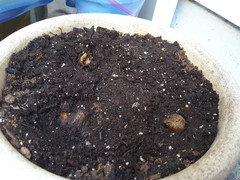
tapla (mid-Michigan, USDA z5b-6a)
6 years agoNothing to be done at this point other than to keep it in a warm place and do not water again until you see new growth; then, only water when a wooden dowel rod stuck deep into the soil comes out clean/dry. I'd be remiss if I didn't mention you would have been better served to ask for advice before you took such a radical route.
AlSanoj Sivadas
5 years agoTake cuttings from your ficus mother plant... Cut the new branches, the woody part that are growing or are having new leaf growth... In a small bottle or pot place the branches together with water.. Submerge atleast 3 nodes in water... In a span of 7-8 days u can see roots developing...
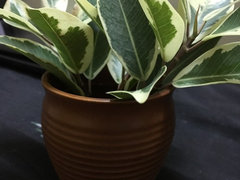
tapla (mid-Michigan, USDA z5b-6a)
5 years agoI wouldn't recommend starting Ficus cuttings in water, even though it might SEEM easier than starting them in a solid medium. Roots formed in water are physiologically VERY different from roots formed in a solid medium, and they don't transition well from water to soil.
Al
Natalie Cards
4 years ago@tapla -- Do you have a recommended book list? I've ordered Ficus: The Exotic Bonsai (Jerry Meislik) as well as The Growing Tree (Brayton Fuller Wilson) -- which was also one of your recommendations on another post. Anything else us container growing Ficus lovers should be taking in?
tapla (mid-Michigan, USDA z5b-6a)
4 years agoJerry's book is good. He's a formerly active member of the Ann Arbor Bonsai Society and now an honorary member. I have a signed copy (I think #23) of the book. Wilson's book is very informing insofar as how trees grow. It describes in detail how additive and multiplicative growth work to add to the tree's biomass.
Other books that have contributed significantly to my understanding of soil science>
Plant Production in Containers II ~ Carl Whitcomb, PhD
Water, Media, and Nutrition for Greenhouse Crops ~ a Ball Publishing book
Growing Media for Ornamental Plants and Turf ~ Handreck and Black
Plant Physiology ~ Taiz & Zaiger
Marshner's Mineral Nutrition of Higher Plants ~ Petra Marschner (original author's daughter)
Plant Physiology ~ Agrios
Make sure you have a clear understanding of the first three before you consider purchasing the last three - they're tough sledding if you don't have a solid foundational understanding of plant physiology.
Botany for Gardeners ~ Brian Capon, is also a very good source of info at a very reasonable price.
AlMichele Rossi
8 months agolast modified: 8 months agoWhat is the maximum size of a ficus benjamin cutting? Branches so long is it impossible that they can take root? Or is the problem not the length of the branch but the number of leaves?
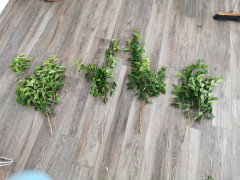
tapla (mid-Michigan, USDA z5b-6a)
8 months agoIt depends on how you intend to treat the cutting(s). Cuttings under mist or in a humidity chamber can be thicker, longer, and have more leaves than those you intend to root on a backyard bench in the shade. I typically prepare ficus cuttings so 2 nodes are covered by soil and 1 or 2 nodes with leaves or with leaves cut in half above the soil. I take into account whether or not the grow medium supports perched water. If it does, when I stick the cutting I make sure the basal end of the cutting is above the max ht of any PWT the medium supports.
This is the top of an existing bonsai tree that needed shortening. I treated it as a single cutting and put it in a humidity chamber after defoliating to prevent the entire propagule from collapsing. If you look close, you can see it's back-budding all over the place and went on to root with no problem. It was like creating an instant bonsai
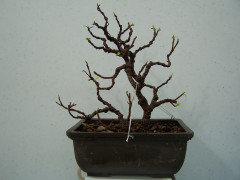
Al
tropicbreezent
8 months agoYou're only limited by what you can handle and where you need to put it. I have several full sized trees and when I remove branches they can't be left laying on or touching the ground otherwise they take root So do it whatever size suits your needs.
ken_adrian Adrian MI cold Z5
8 months agothe issue is.. with no roots.. how many leaves can survive.. while the cutting focuses on trying to grow roots... the leaves will literally suck all available moisture out of the cutting.. trying to survive.. and it will be all bone dry by the time any roots might develop ...
if .. for e.g .... it take 4 weeks to root.. would it surprise you.. you lose most or all the leaves.. and all you are left with is hoping dormant buds will survive and sprout.. that the trunk didnt dry out so much. the buds died...
professional would use the smallest piece possible.. so they could get a hundred pieces from the large cutting.. and in a given space... you could have a hundred small cuttings.. or one large on...
and as noted.. if you move to computer run misting system.. that can mist a plant every 4 minutes 24 hours a day.. or whatever is necessary.. well your one large cutting might cost you thousands..
here is a link to propagating your plant.. without looking first.. watch a few.. and focus on the size of cuttings that are uses..
https://duckduckgo.com/?t=ftsa&q=fuicus+propagation&iax=videos&ia=videos
kenken_adrian Adrian MI cold Z5
8 months agobtw.. michelle.. starting your own post.. would probably be better than using an 11 year old post as a base for your new questions...
but if thats the way you want to do it.. so be it...
ken
















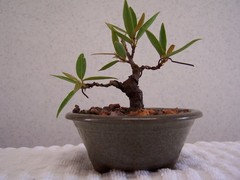
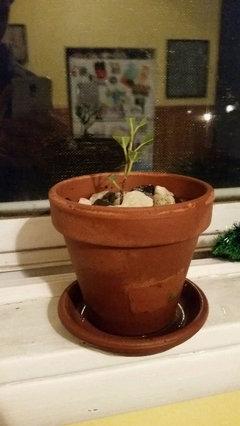
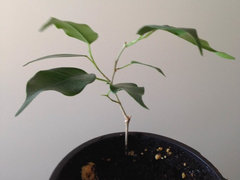





tapla (mid-Michigan, USDA z5b-6a)